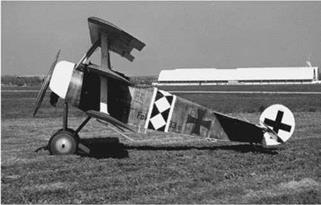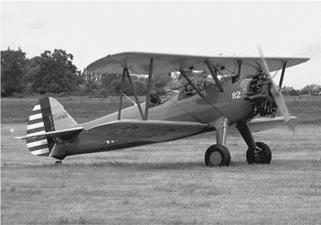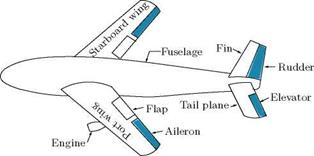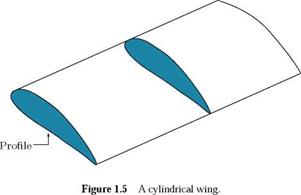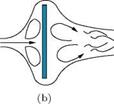Ethirajan Rathakrishnan is Professor of Aerospace Engineering at the Indian Institute of Technology Kanpur, India. He is well-known internationally for his research in the area of high-speed jets. The limit for the passive control of jets, called Rathakrishnan Limit, is his contribution to the field of jet research, and the concept of breathing blunt nose (BBN), which reduces the positive pressure at the nose and increases the low-pressure at the base simultaneously, is his contribution to drag reduction at hypersonic speeds. He has published a large number of research articles in many reputed international journals. He is a fellow of many professional societies, including the Royal Aeronautical Society. Professor Rathakrishnan serves as editor-in-chief of the International Review of Aerospace Engineering (IREASE) Journal. He has authored nine other books: Gas Dynamics, 4th ed. (PHI Learning, New Delhi, 2012); Fundamentals of Engineering Thermodynamics, 2nd ed. (PHI Learning, New Delhi, 2005); Fluid Mechanics: An Introduction, 3rd ed. (PHI Learning, New Delhi, 2012); Gas Tables, 3rd ed. (Universities Press, Hyderabad, India, 2012); Instrumentation, Measurements, and Experiments in Fluids (CRC Press, Taylor & Francis Group, Boca Raton, USA, 2007); Theory of Compressible Flows (Maruzen Co., Ltd., Tokyo, Japan, 2008); Gas Dynamics Work Book (Praise Worthy Prize, Napoli, Italy, 2010); Applied Gas Dynamics (John Wiley, New Jersey, USA, 2010); and Elements of Heat Transfer, (CRC Press, Taylor & Francis Group, Boca Raton, USA, 2012).
This book has been developed to serve as a text for theoretical aerodynamics at the introductory level for both undergraduate courses and for an advanced course at graduate level. The basic aim of this book is to provide a complete text covering both the basic and applied aspects of aerodynamic theory for students, engineers, and applied physicists. The philosophy followed in this book is that the subject of aerodynamic theory is covered by combining the theoretical analysis, physical features and application aspects.
The fundamentals of fluid dynamics and gas dynamics are covered as it is treated at the undergraduate level. The essence of fluid mechanics, conformal transformation and vortex theory, being the basics for the subject of theoretical aerodynamics, are given in separate chapters. A considerable number of solved examples are given in these chapters to fix the concepts introduced and a large number of exercise problems along with answers are listed at the end of these chapters to test the understanding of the material studied.
To make readers comfortable with the basic features of aircraft geometry and its flight, vital parts of aircraft and the preliminary aspects of its flight are discussed in the first and final chapters. The entire spectrum of theoretical aerodynamics is presented in this book, with necessary explanations on every aspect. The material covered in this book is so designed that any beginner can follow it comfortably. The topics covered are broad based, starting from the basic principles and progressing towards the physics of the flow which governs the flow process.
The book is organized in a logical manner and the topics are discussed in a systematic way. First, the basic aspects of the fluid flow and vortices are reviewed in order to establish a firm basis for the subject of aerodynamic theory. Following this, conformal transformation of flows is introduced with the elementary aspects and then gradually proceeding to the vital aspects and application of Joukowski transformation which transforms a circle in the physical plane to lift generating profiles such as symmetrical aerofoil, circular arc and cambered aerofoil in the tranformed plane. Following the transformation, vortex generation and its effect on lift and drag are discussed in depth. The chapter on thin aerofoil theory discusses the performance of aerofoils, highlighting the application and limitations of the thin aerofoils. The chapter on panel methods presents the source and vortex panel techniques meant for solving the flow around nonlifting and lifting bodies, respectively.
The chapter on finite wing theory presents the performance of wings of finite aspect ratio, where the horseshoe vortex, made up of the bound vortex and tip vortices, plays a dominant role. The procedure for calculating the lift, drag and pitching moment for symmetrical and cambered profiles is discussed in detail. The consequence of the velocity induced by the vortex system is presented in detail, along with solved examples at appropriate places.
The chapter on compressible flows covers the basics and application aspects in detail for both subsonic and supersonic regimes of the flow. The similarity consideration covering the Parandtl-Glauert I and II rules and Gothert rule are presented in detail. The basic governing equation and its simplification with small perturbation assumption is covered systematically. Shocks and expansion waves and their influence on the flow field are discussed in depth. Following this the shock-expansion theory and thin aerofoil theory and their application to calculate the lift and drag are presented.
In the final chapter, some basic flights are introduced briefly, covering the level flight, gliding and climbing modes of flight. A brief coverage of phugoid motion is also presented.
The selected references given at the end are, it is hoped, a useful guide for further study of the voluminous subject.
This book is the outgrowth of lectures presented over a number of years, both at undergraduate and graduate level. The student, or reader, is assumed to have a background in the basic courses of fluid mechanics. Advanced undergraduate students should be able to handle the subject material comfortably. Sufficient details have been included so that the text can be used for self study. Thus, the book can be useful for scientists and engineers working in the field of aerodynamics in industries and research laboratories.
My sincere thanks to my undergraduate and graduate students in India and abroad, who are directly and indirectly responsible for the development of this book.
I would like to express my sincere thanks to Yasumasa Watanabe, doctoral student of Aerospace Engineering, the University of Tokyo, Japan, for his help in making some solved examples along with computer codes. I thank Shashank Khurana, doctoral student of Aerospace Engineering, the University of Tokyo, Japan, for critically checking the manuscript of this book. Indeed, incorporation of the suggestions given by Shashank greatly enhanced the clarity of manuscript of this book. I thank my doctoral students Mrinal Kaushik and Arun Kumar, for checking the manuscript and the solutions manual, and for giving some useful suggestions.
For instructors only, a companion Solutions Manual is available from John Wiley and contains typed solutions to all the end-of-chapter problems can be found at www. wiley. com/go/rathakrishnan. The financial support extended by the Continuing Education Centre of the Indian Institute of Technology Kanpur, for the preparation of the manuscript is gratefully acknowledged.
Ethirajan Rathakrishnan
1.1 Introduction
Aerodynamics is the science concerned with the motion of air and bodies moving through air. In other words, aerodynamics is a branch of dynamics concerned with the study of motion of air, particularly when it interacts with a moving object. The forces acting on bodies moving through the air are termed aerodynamic forces. Air is a fluid, and in accordance with Archimedes principle, an aircraft will be buoyed up by a force equal to the weight of air displaced by it. The buoyancy force Fb will act vertically upwards. The weight W of the aircraft is a force which acts vertically downwards; thus the magnitude of the net force acting on an aircraft, even when it is not moving, is (W — Fb). The force (W — Fb) will act irrespective of whether the aircraft is at rest or in motion.
Now, let us consider an aircraft flying with constant speed V through still air, as shown in Figure 1.1, that is, any motion of air is solely due to the motion of the aircraft. Let this motion of the aircraft is maintained by a tractive force T exerted by the engines.
Newton’s first law of motion asserts that the resultant force acting on the aircraft must be zero, when it is at a steady flight (unaccelerated motion). Therefore, there must be an additional force Fa(j, say, such that the vectorial sum of the forces acting on the aircraft is:
 |
Force Fad is called the aerodynamic force exerted on the aircraft. In this definition of aerodynamic force, the aircraft is considered to be moving with constant velocity V in stagnant air. Instead, we may imagine that the aircraft is at rest with the air streaming past it. In this case, the air velocity over the aircraft will be — V. It is important to note that the aerodynamic force is theoretically the same in both cases; therefore we may adopt whichever point of view is convenient for us. In the measurement of forces on an aircraft using wind tunnels, this principle is adopted, that is, the aircraft model is fixed in the wind tunnel test-section and the air is made to flow over the model. In our discussions we shall always refer to the direction of V as the direction of aircraft motion, and the direction of — V as the direction of airstream or relative wind.











